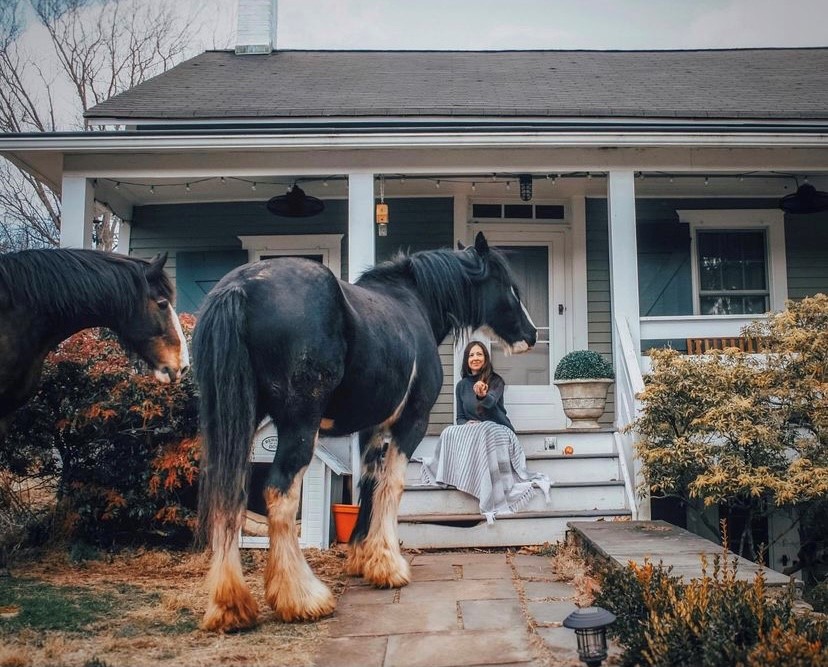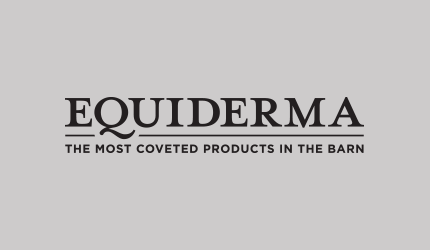- Shop
Collections
Categories
Skin Conditions
- Skin Conditions
- Apparel & Accessories
- Meet the Founder
- Shop
Collections
Categories
Skin Conditions
- Skin Conditions
- Apparel & Accessories
- Meet the Founder

Horses offer stacked functions to the homestead in addition to different forms of equitation and companionship. Drafts and mules, specifically, can offer even more services. They are useful in a multi – species rotational grazing plan, add valuable manure to the soil, compost for growing spaces, strength and work ability, and more.
Any horse will happily graze and contribute to the rotational grazing circuit. When rotational grazing is implemented, horses graze for a small number of days in a subdivided pasture space. Reduced spaces encourage horses to graze the entire subdivision more evenly, rather than in spotty patches. Horses should enter a space for grazing when grasses reach roughly 8” high. For forage brassicas and legumes, a height of 10 – 12” is ideal before introducing stock. Horses should be pulled from a pasture when forage is reduced to a height of 4”. Studies have shown that grasses and forage will grow back faster (approximately 30 days) to a 12” height post – grazing. When horses are allowed to graze forage to a 2” tall stubble, 45 days are needed for regeneration to reach 12” tall.
In addition to a faster regrowth period, grazing in a rotational way encourages a higher amount of carbon to be absorbed into the soil. Grasses and other forages absorb carbon during the process of photosynthesis. The more often and faster that these plants can grow, the more carbon they can absorb and ultimately pull downward through their stems and root systems. Carbon is then excreted and deposited into the soil.
As horses forage they leave manure behind which returns nutrients and undigested seed back to the soil. My horses leave a grazing plot after 2 – 3 days, and then I introduce sheep, followed by poultry. The sheep graze leafy vegetation left behind by the horses. Thereafter the poultry break apart deposited manure piles looking for insects. Any manure not spread by poultry is evened out with a drag, teeth facing up so as not to tear into our soil’s layers. The drag is either pulled by a Clydesdale equipped with a single – tree harness or our four – wheeler. An even distribution of manure means an even deposit of nutrients to the soil.
When combined with other species in a multi – species grazing routine, horses help to break up the parasitic cycle that affect sheep and goats. The sheep and goats do the same for horses. Parasites are largely species – specific. This means that while grazing, horses ingest parasitic larvae that infect sheep. The horse is not the host, so the eggs/larvae die off. When sheep graze they ingest the parasitic eggs or larvae that affect horses. Because sheep and goats are not their host, those parasites die. We pull our animals after 2 – 3 days of rotational grazing to avoid most parasite larvae hatching cycles. Homesteaders and farmers who work this way see a massive reduction in Strongyles in horses and Barber Pole Worm in sheep, and have found deworming is required less often.
Horse manure is a “hot manure” which means it requires composting before it’s safe and ready to use in growing spaces — especially those which grow crops for human consumption. Any manure and bedding is carted off to our compost system to break down via the hot composting method. This kills bacteria, pathogens and any weed or grass seeds. I prefer pine pelleted bedding in my stalls as it’s easier to biodegrade than shavings in the compost heap. Once the manure and bedding is fully composted, a rich black organic matter remains which is an ideal growing medium for plants.
Any horse can offer the above benefits to a homestead when holistically managed. Drafts and mules go one step further in their benefit with the ability to pull implements. A horse requires no fuel (in the form of gasoline). They can be trained to plow, drive forecarts and sleds, help with seeding, tilling and even harvesting so long as the right equipment is provided. These tasks are also an amazing work – bond opportunity between human and horse.
Currently I have two Clydes. I have a mare named Dozer who weighs about 2000 pounds. She’s from a local Clydesdale farm where the horses are used for trail riding. I also have a gelding, who is a rescue from a nearby last chance auction. Finnegan is a retired Amish horse. It took a lot of energy, time, veterinary and farrier care, and patience to return Finnegan to health. And to teach him to trust me.
These horses have provided me with so much more than riding and companionship. They’ve contributed to my immediate environment, my food supply by way of compost for crops, and helped my other animals reduce their parasite loads. They are a wonderful addition to a permaculture homestead.
I started growing and preserving as much of my own homegrown produce as possible. We quickly grew from a home garden to a farm bustling with Clydesdales, geese and ducks for eggs, an apiary with ten beehives, sheep and a small orchard. I tap our own trees for maple syrup, create my own soap and we even added a hobby vineyard for homemade wine recently.
I have found so much peace and contentment by living and working alongside animals and Mother Nature. Now I strive to share this passion for self-sufficient living with others through my Instagram account, online homesteading courses, my online plant-based, garden-to-table cookbooks, and The Little Homesteader book series debuting fall of 2021.”
Check out all of Angela’s favorites for her Drafts on the Homestead here!

It’s possible for your horse to live outside in comfort all year...

Winter Rain Rot brings with it a unique and frustrating challenge for...

Ordinarily in this blog I share ideas for understanding your horse better...